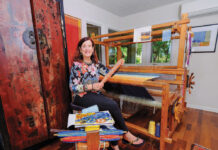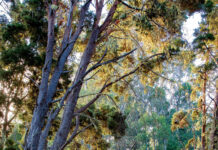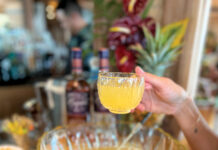The Man Behind Maui’s Best Athletes
Story by Ashley Probst
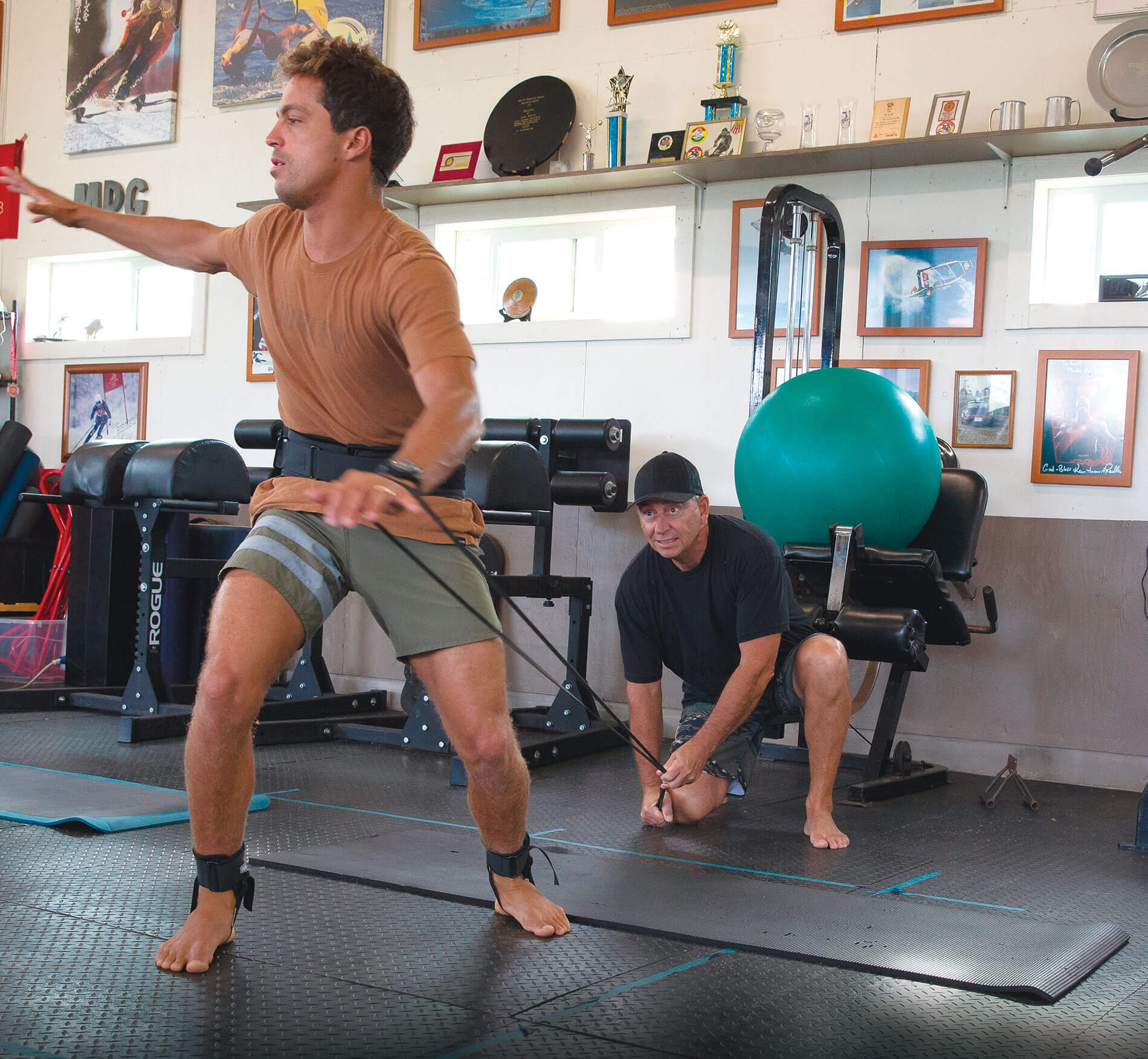
Scott Sanchez’s training facility in Ha‘iku is an athlete’s paradise. The floor is an organized chaos of gym equipment catering to sundry sports and skill sets. In the corner is an amalgam of parallel bars, a modified kiteboard and a mini trampoline, and on the walls hang awards, autographed athlete photos, event posters and jerseys.
On any given day of the week, Sanchez can be found here training one of the many professional athletes who call his facility home, champions like kitesurfer Jesse Richman, snowboarder-surfer-skater Lyon Farrell, and all-around elite waterman Kai Lenny — who has trained with Sanchez for nearly 20 years.
Every session is different, and Sanchez pivots constantly, fine-tuning the workouts to help his clients improve physically — and mentally — and excel at his or her sport. Years of coaching high-level competitors have honed Sanchez’s intuition, as did his own experience as an Olympic alpine ski racer in 1980 and 1984. When he retired, Sanchez began coaching professionally.
“I benefited from training with a lot of different national [and international] teams, and experienced the cultures surrounding them,” Sanchez says. “So while I may not be an expert in all sports, I am able to find out what is affecting an athlete’s learning curve, or their ability to execute on demand.”
Sometimes the issue is physical, sometimes it is mental; either way, Sanchez has the tools to help his clients overcome their roadblocks and race forward to the podium. Sanchez and his family relocated to Maui in the 1990s, and he began conducting junior windsurfing camps. Athletes came from all over the globe to train with him. “I coached Micah Buzianis, Jimmy Diaz, Francisco Goya and Daida Moreno, and helped them win more than a dozen championships,” Sanchez says.
When athletes are winning, word gets around, and Sanchez has never needed to advertise his services. To date, he has guided his athletes to more than 60 world titles, and his eclectic clientele includes skiers, snowboarders, NFL and NBA players, martial artists, a Formula One driver, and, of course, Maui’s most notable watersports athletes.
“Everyone can train hard, but what’s really important is the relationship, the trust, between the coach and the athlete,” says Sanchez. “The insight I have is God-given, and my job is to be a good steward over that.”
Hala Pepe (Chrysodracon auwahiensis)
Story by Lara McGlashan
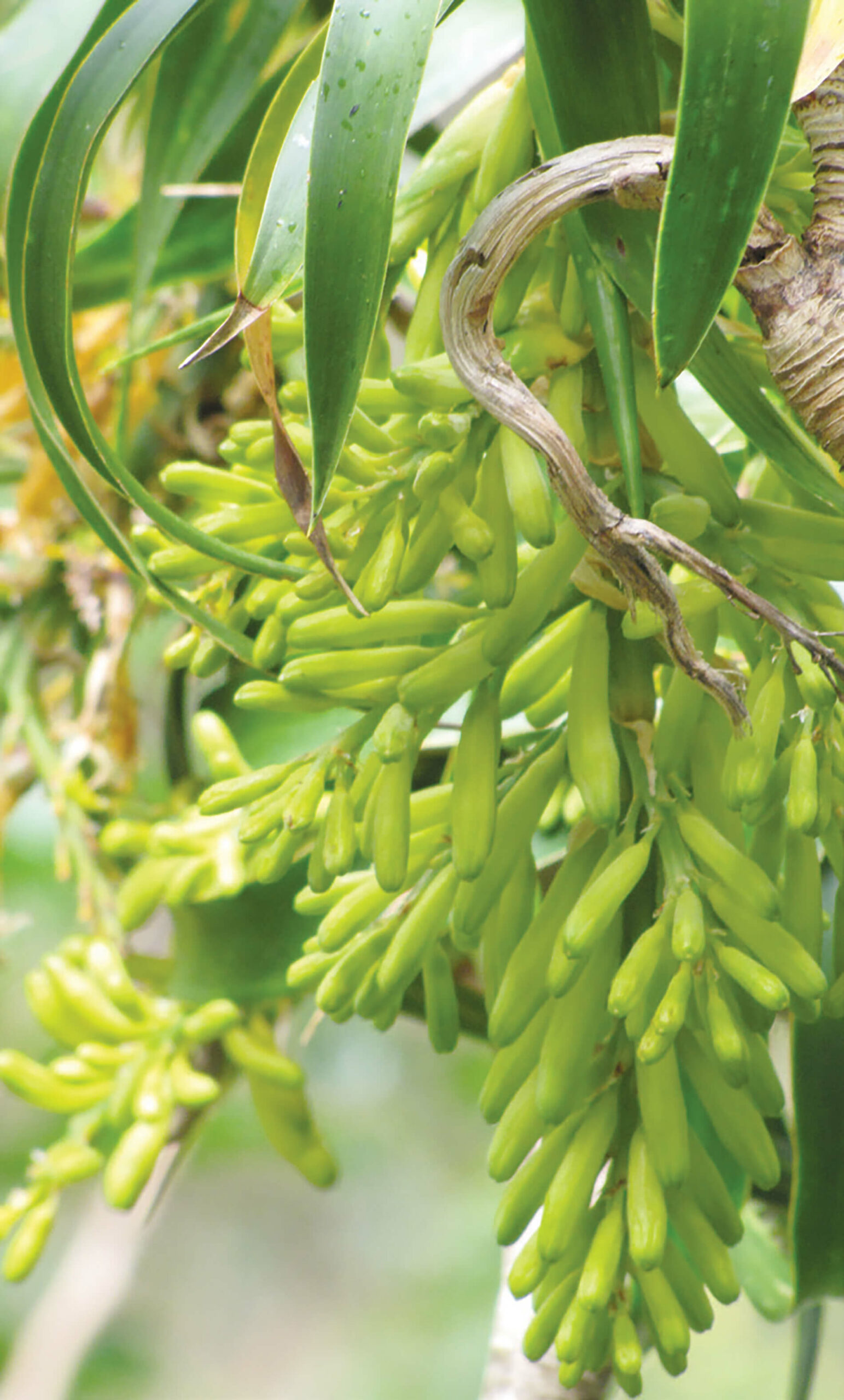
If ever there was a physical manifestation of The Lorax’s Truffula trees, it would be hala pepe. The tree is a collection of slim trunks reaching for the skies, each one topped with a jaunty pom-pom of leaves. In the spring, clusters of yellow pendant flowers turn into deep-red berries.
Hala pepe means “baby hala,” likely due to its resemblance to the Polynesian-introduced hala tree (Pandanus tectorius), which is larger and found closer to the coast. Each of the major Hawaiian islands has its own endemic species of the tree; Maui’s is Chrysodracon auwahiensis. Its name is derived from Auwahi, a dryland forest on the leeward slope of Haleakala, and the site of many mature hala pepe.
Early Hawaiians used the leaves of hala pepe medicinally, adding them to steam baths to cure chills, fevers and headaches. They carved the soft wood into ki‘i (idols), wove the flowers into lei, and used the bark, roots and leaves to help ease asthma. Hala pepe is also important to hula. Practitioners place a branch on the kuahu (altar) in a hula halau (hula house) in honor of Laka, the goddess of hula, and often grow the tree in their own gardens for use in their practice.
Hala pepe has another — less whimsical — resemblance to the Truffula: both face possible extinction. The drought-tolerant hala pepe can reach 30 feet in height, but it grows so slowly that grazing cattle and feral goats threaten the tree, as do fire and human development. Help perpetuate this important species: Plant hala pepe in place of the money tree, or join the Auwahi Forest Restoration Project on one of its volunteer trips.
808.572.2950 | auwahi.org | IG @auwahi_forest | FB @auwahiforest
Click here to subscribe to Maui Nō Ka ‘Oi Magazine

